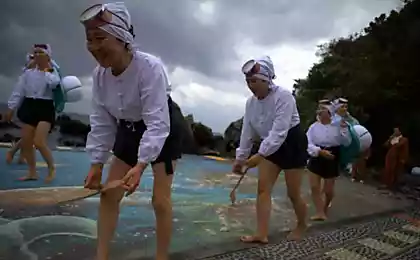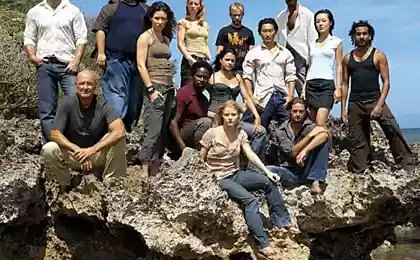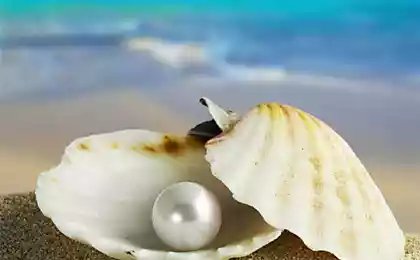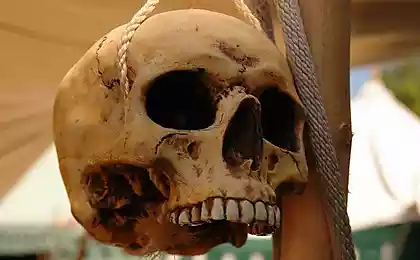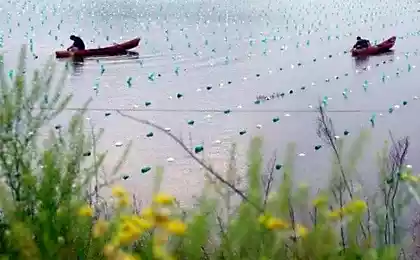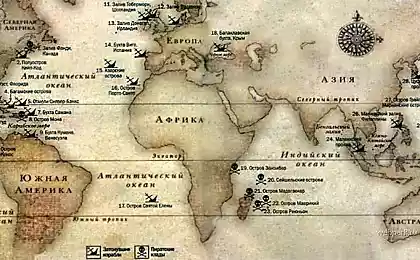532
Mikimoto — the pearl island
On the island take guests from all over the world who enjoy visiting the Museum of pearl diving memorial Museum, Kokichi Mikimoto show giraldez AMA.
Imagine a mountainous country, which at first boldly penetrated into the ocean, pushed him, and then as if wilted, tired of fighting, resigned to the door of the water element and even intermarried with her. This is the birthplace of the cultured pearl in the Peninsula of SIMA, where the sea filled the basin between the mountains. Green slopes rise directly from the sea of blue. Secluded coves, Islands, bays, similar to mountain lake — they are innumerable.
Pearl island Mikimoto is the place where in 1893, Mikimoto Kokichi the world's first successfully received cultured pearls from saltwater mollusks.
On the island take guests from all over the world who enjoy visiting the Museum of pearl diving memorial Museum, Kokichi Mikimoto show giraldez AMA.
In the Museum of the pearl whose content is dedicated to everything about pearls, with the different parties presents its attractiveness: in terms of history, fine and applied art, science and industry.
The Liberty bell — 12,250 pearls and 366 diamonds
In the memorial Museum, Kokichi Mikimoto presents his life, which he devoted to pearls and was an enthusiast of the business until the end of life.
Five-storied pagoda, Kokichi Mikimoto — pearls was 12760
Here you can watch the show giraldez for pearls – AMA, with open stands, and from special viewing rooms. ( In the observation room with audio guide in Russian).
Maybe watch this show and with panoramic cabins special craft.
Store "Pearl Plaza" on the first floor are products of the firm Mikimoto original jewelry Pearl Islands. On the second floor is an observation deck, which offers wonderful views of the Bay of Toba, and the restaurant Awako.
As Kokichi Mikimoto managed to turn into a "pet" is such a capricious creature like an oyster?
The Japanese know how to find a new use for human labor, thus offsetting the poverty of Japan in the matter of natural resources. Faux pearls inside oysters is a painful deviation from nature, it's like a kidney stone in humans. And in order to get inside the clam the pearl was formed, a whole chain of coincidences: the sink needs to get grit, which is entirely included in the body of oysters without injuring her internal organs. In addition, the grit needs to "grab" a piece of the surface tissue of a mollusk can produce a pearl. This tissue begins to envelop a foreign body iridescent layers, gradually forming a pearl.
To produce pearls artificially, so to increase the probability of very rare circumstances. Artificial pearls is as much real as natural, ie formed in the sink by accident.
The idea to grow pearls on underwater plantations first came the merchant's son noodles by the name Mikimoto. In 1907, after nineteen years of unsuccessful experiments, he finally managed to spherical pearls, by introducing into the body of bivalve shells pieces of mother of pearl wrapped in living tissue of another oyster.
People who are able to enter the nucleus in the body of a mollusk, referred to as operators. It is, if you think about it, thousands of experienced surgeons, each of which makes daily for four or eight operations; and at the same time, thousands of jewelers that demand a much more subtle skill than craftsmen, ready upravlyayuschih pearls in gold and silver.

To the nucleolus was the gem, you need to enter it exactly in the place where the shellfish would tolerate inside this foreign object. Need to achieve more and make the shell continue to put the mother of pearl is not on their leaves, and it is around this foreign body. That's why we have to do something similar to the vaccine – enter the following-a piece of tissue from another mollusk. It is necessary to introduce - and additive to the right place. When it is impossible to damage or hurt the internal organs of the mollusk. In the first case, utrica die, the second pearl will not have the correct form. Finally, the additive should touch the kernel, otherwise it cells that produce nacre, will not be able to form around the nucleus "pearl SAC".
If you stick a scalpel a little deeper than it should, the sash shell lifelessly open. This means – damaged connective muscle and oyster doomed...
It is believed that you need to do at least 10,000 surgeries to learn to enter at least small nucleoli. Enter major trust only the operators having more than three years.
Small pearls (diameter from four to six millimeters) Matures during the year, the average (six to seven millimeters) – for two years, large (more than seven millimeters) for three.
Of course, the larger the nucleus, the more expensive the pearl can be grown. There is, however, known biological limit beyond which even the most intricate operations, the body shell can not keep the inside of such a large foreign body. For double sinks, this is the limit - with a diameter of seven millimeters. To become a pearl, it must acquire mother-of-pearl layer of a thickness of less than a millimeter.
Experience has shown that to keep semiilliterate - in the body of the mollusk longer than three years is inappropriate. Increases the likelihood of any kind of growths. If the pearl and grows, it becomes less radiant. Quickens the danger of exclusion when the mollusk even at the cost of its own destruction pushes this sprawling foreign body out.
Almost everywhere the water of the Gulf of the Peninsula of SIMA shaded dark stripes. Rafts made of poles to which are tied under water basket with shells that resemble the furrows of the rice fields. On the green sides of the mountains, surrounding the Bay are a riot of red welts. This is the pearling industry.
Hard shell to protect from the cold. With twelve degrees of molluscs dramatically slow down all life processes, and at eight degrees, they die. Clams, like a sea in which to swim nice person. Below fifteen degrees is cold, and above twenty-eight, very hot. On a hot August Japanese time the rafts in tow we have to take away from the shores and lower the baskets into the cooler, deeper layers.
The AMA divers existed in Japan since time immemorial. Women AMA — divers for pearls. Craft AMA has an ancient history: in the ancient Japanese book of poetry "Manyoshu" says that 2000 years ago in an area called Shem lived AMA.

This whole area, which is now part of the national Park Isejima surrounded by mountains of Kii. Its shores, as the coast of the Seto Inland sea, plunge sharply into deep waters. In its geological structure they belong to the ancient period of "lower Jurassic". That is why for the district of Shem typical rugged coastline and numerous Islands located along the coast. The slopes of the mountains come to the sea, flat land here is very little, so the life of the local population since ancient times has been associated with the sea. The men were engaged in fishing, while women made lighter work, producing products of the sea. The climate in the Peninsula of SIMA is warm enough and the sea is rich in marine products. So here came the craft women giraldez for pearls – AMA.
Currently, the national Park Isejima lives about 1000 am. Numerous groups of nuraldin of different ages are working in the turquoise waves of the sea.
Cultured pearls from MIKIMOTO
источник:nlo-mir.ru
Source: /users/1
The most dangerous diseases in history
For oil and gas companies will be the first environmental rating
